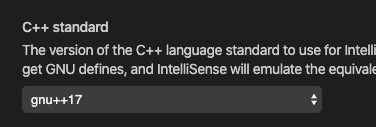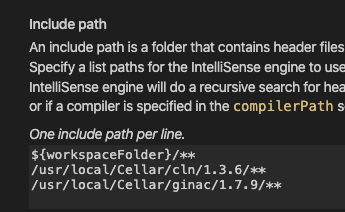A quick guide on getting started with GiNaC on macos.
Background
I decided to start my next project which will be calculating the “orbitals” of electrons in Hydrogen.
I was going to write it in Go, but calculating the Rodrigues formula and the associated Legendre Functions require performing an arbitrary polynomial derivative, and I couldn’t find a good symbolic differentiator in GoLang. (And I’d like to see the results, not use a numerical differentiator).
Turns out there’s a good library in C/C++ that some particle physicists use called GiNaCs. It has nice clean docs, and one of the starter examples was generating the hermite polynomials! (Which is similar to what I needed to do! (In that it’s built off of differentiating \( e^{-x} \) some amount of times.)
Installing GiNaCs
On Macos it’s extremely easy! First you need to install CLN (Class Library for Numbers), and then GiNaC. But they’re both in homebrew!
brew install cln ginac
It’s possible you’ll need to install xcode if you haven’t already. This is so gcc(clang) is setup. To install it you just run xcode-select --install.
Setting up VSCode
Then I setup my IDE (I use Visual Code):
- Set the C++ Standard to gnu++17. The commit messages within GiNaCs made it look like they’re working on c++20 so I assume they’re already on 17.

- Set the include paths

To find the exact version for your include paths, open up terminal, and cd into the package directories (/usr/local/Cellar) to find the correct version numbers.
After this intelitype should work.
Build the example
I had to modify the default example a little bit. It was complaining about not knowing which version of pow to use. So I just removed the namespaces (which I wanted to do anyways as I’m getting back into C++ and remember what belongs to what package)
#include <iostream>
#include <ginac/ginac.h>
GiNaC::ex HermitePoly(const GiNaC::symbol &x, int n)
{
GiNaC::ex HKer = exp(-pow(x, 2));
return GiNaC::normal(GiNaC::pow(-1, n) * GiNaC::diff(HKer, x, n) / HKer);
}
int main()
{
GiNaC::symbol z("z");
for (int i = 0; i < 6; ++i)
std::cout << "H_" << i << "(z) == " << HermitePoly(z, i) << std::endl;
return 0;
}
To build I ran:
g++ -std=gnu++17 hermitePoly.cpp -o hermitePoly -L/usr/local/Cellar/ginac/1.7.9/lib -lginac -L/usr/local/Cellar/cln/1.3.6/lib -lcln
Again, you’ll need to know your exact package versions. For me it was ginac=1.7.9 and cln=1.3.6 on May 27th, 2020.
And then to execute your hard work:
./hermitePoly
I keep everything in a Makefile, so really I just type “make”:
run: build
./hermitePoly
build:
g++ -std=gnu++17 hermitePoly.cpp -o hermitePoly -L/usr/local/Cellar/ginac/1.7.9/lib -lginac -L/usr/local/Cellar/cln/1.3.6/lib -lcln
Conclusion
I can’t believe how easy it was, I’m excited to start calculating the orbitals!